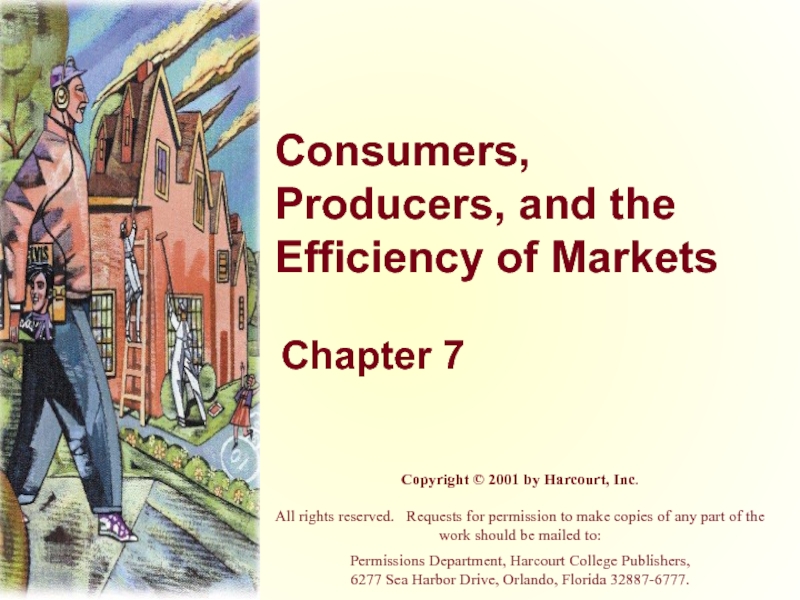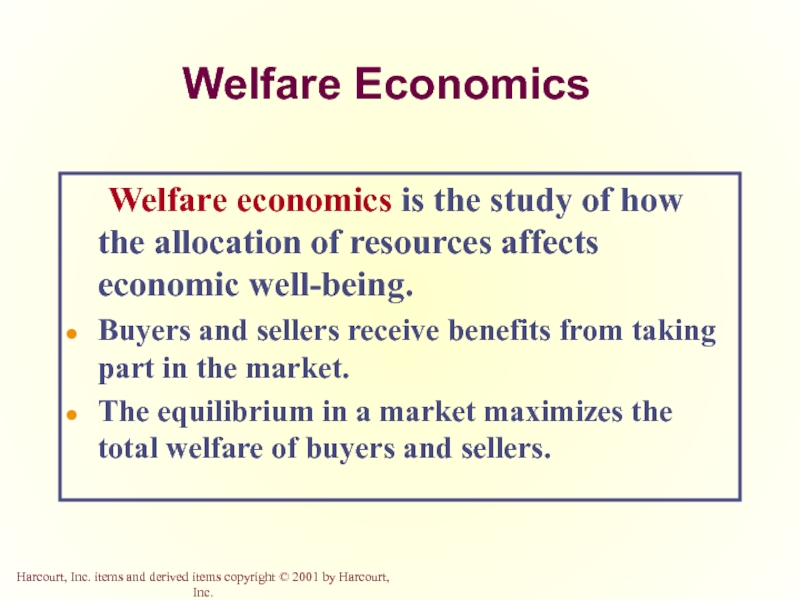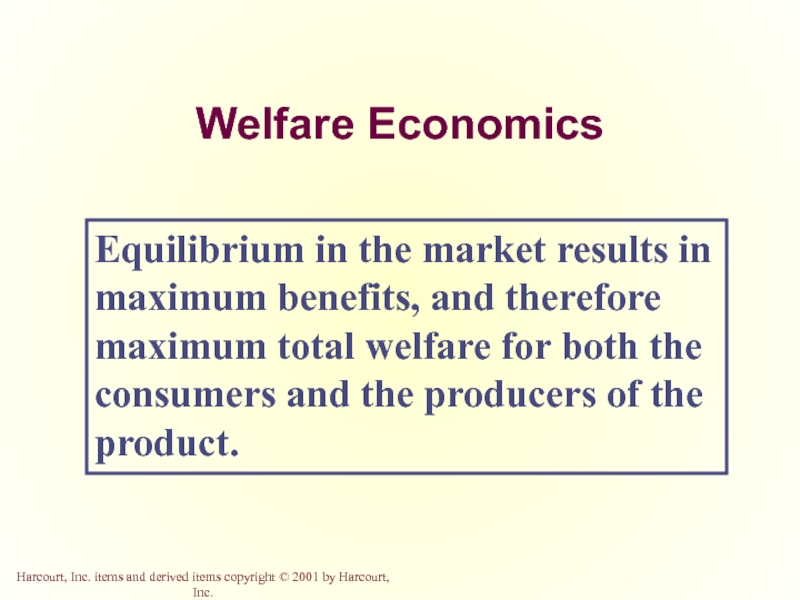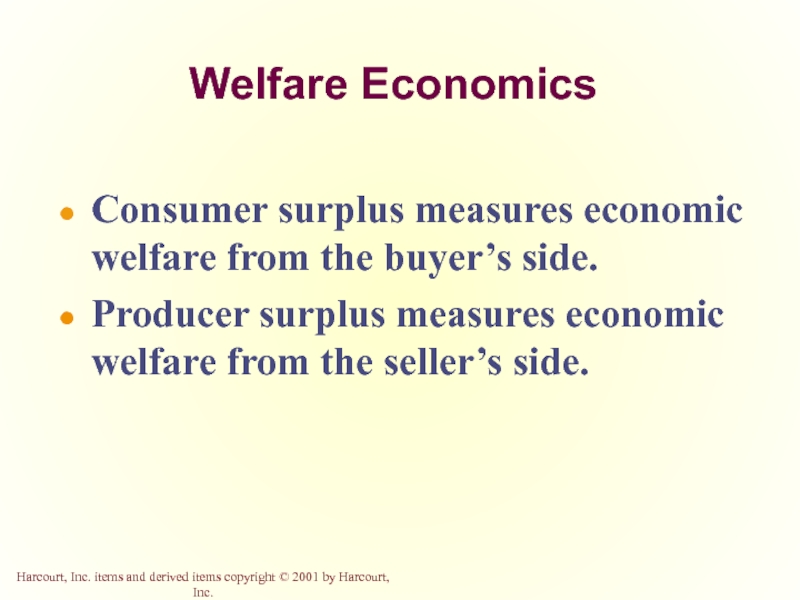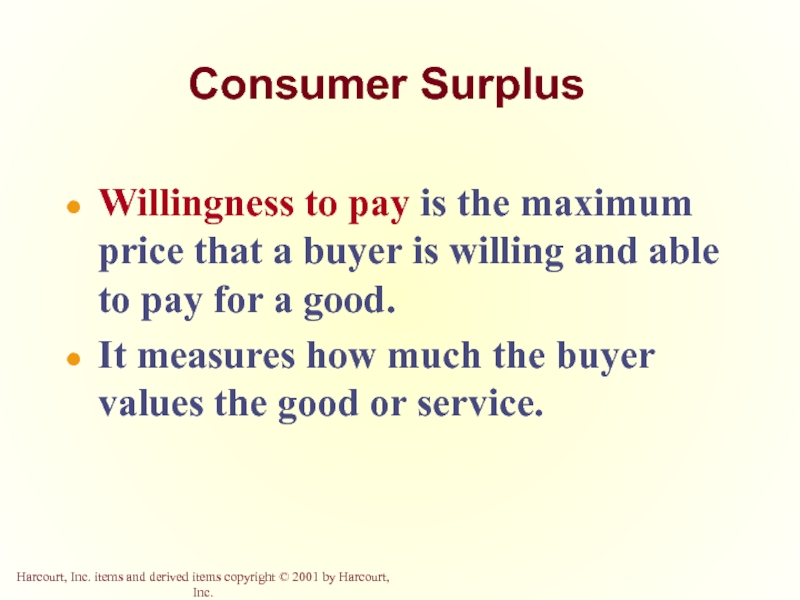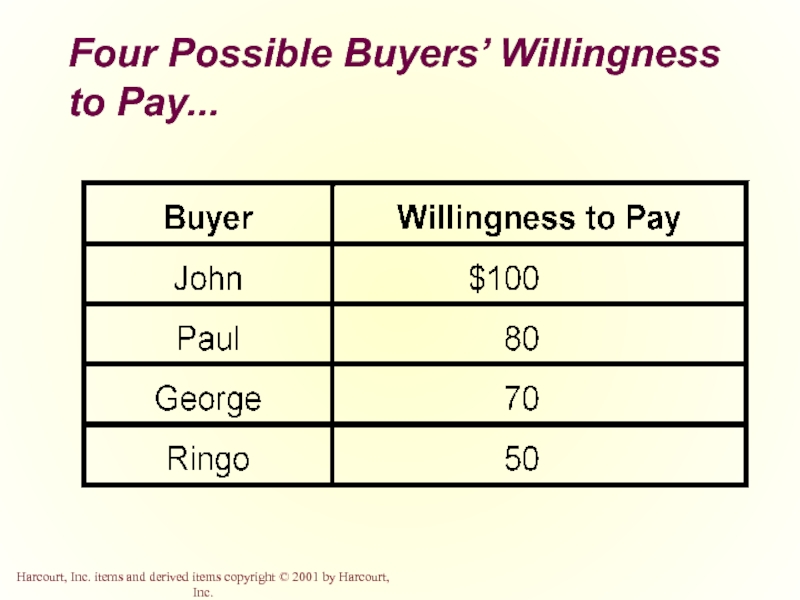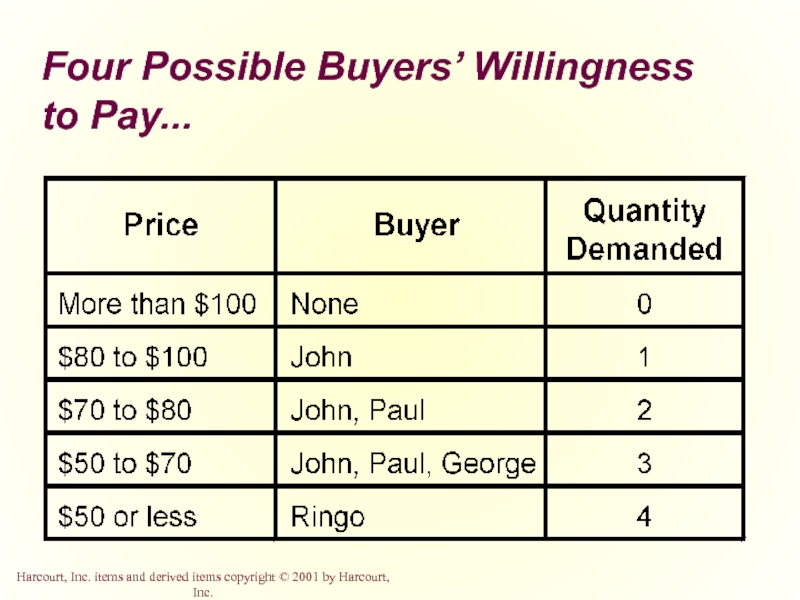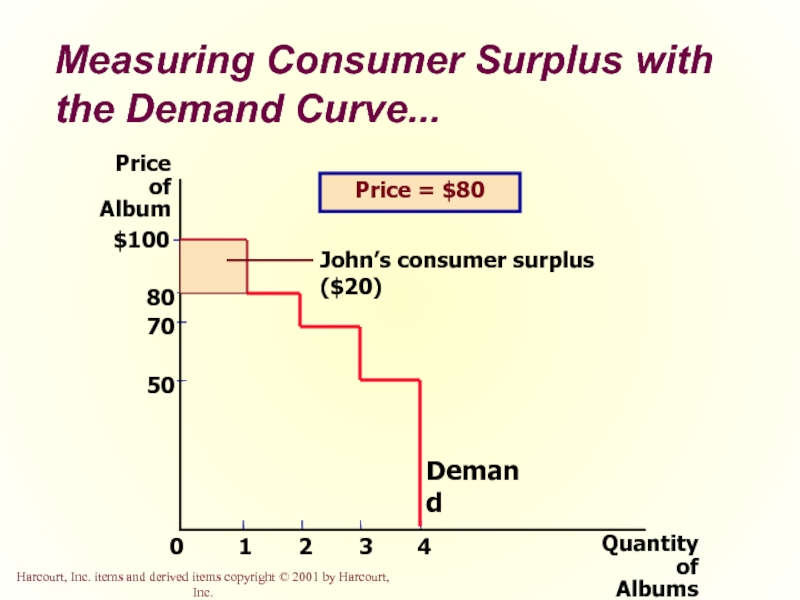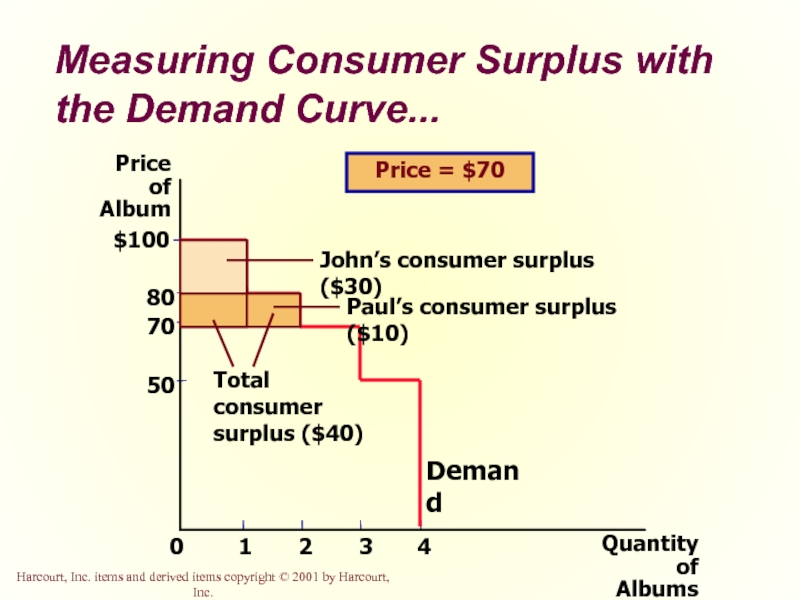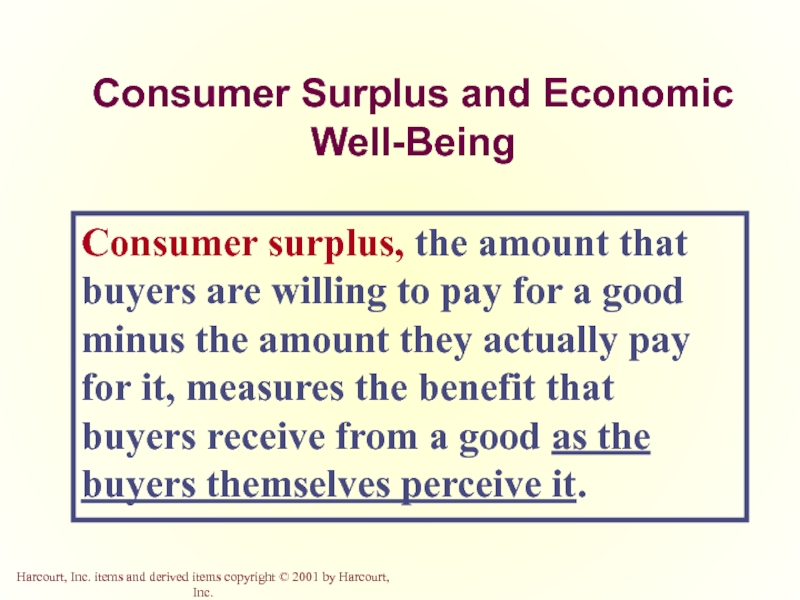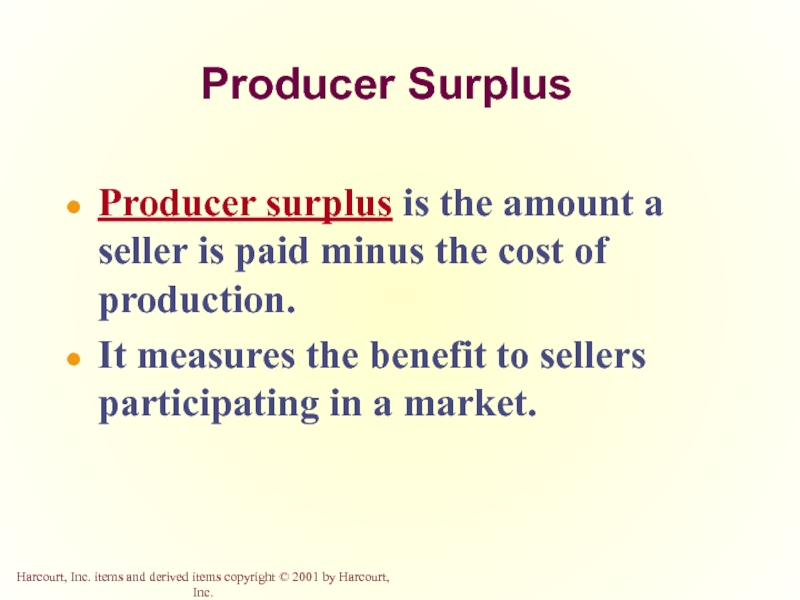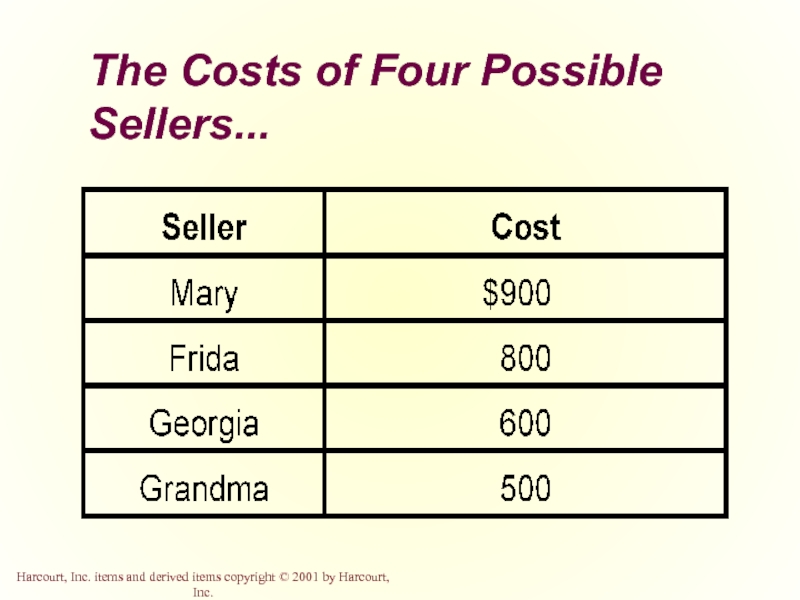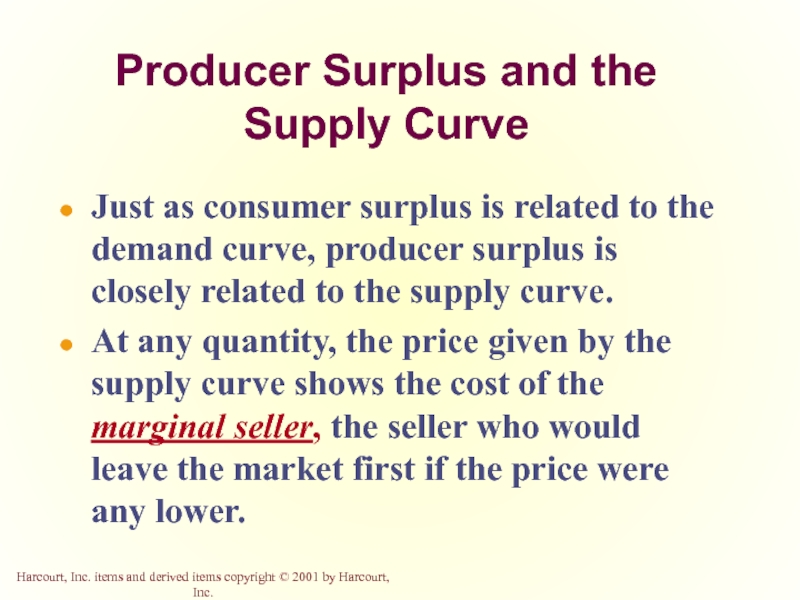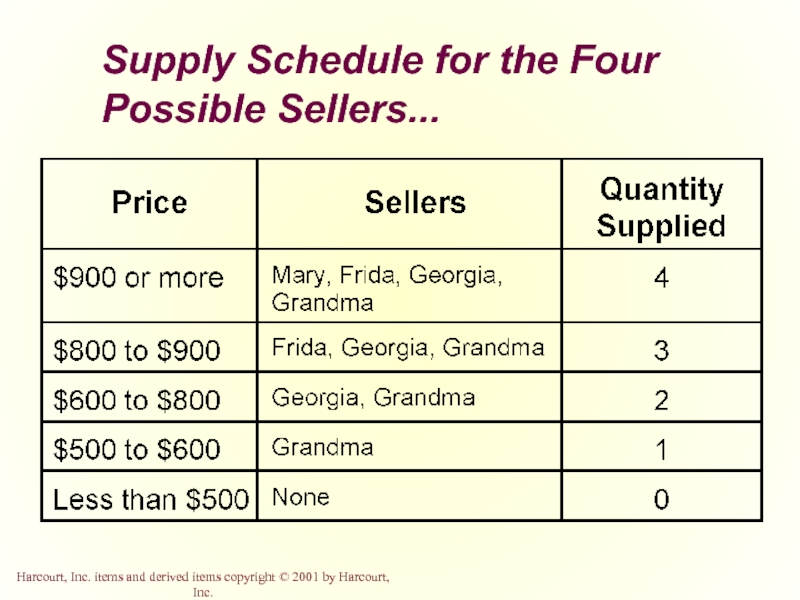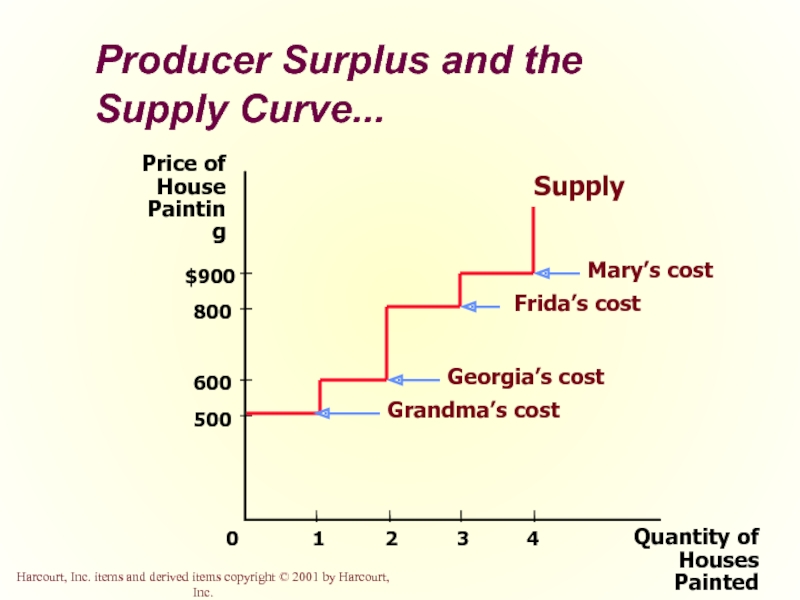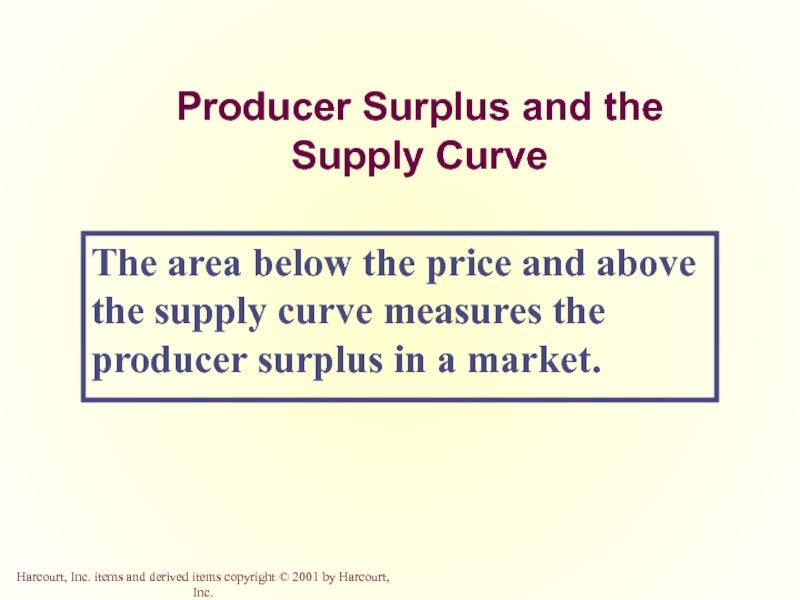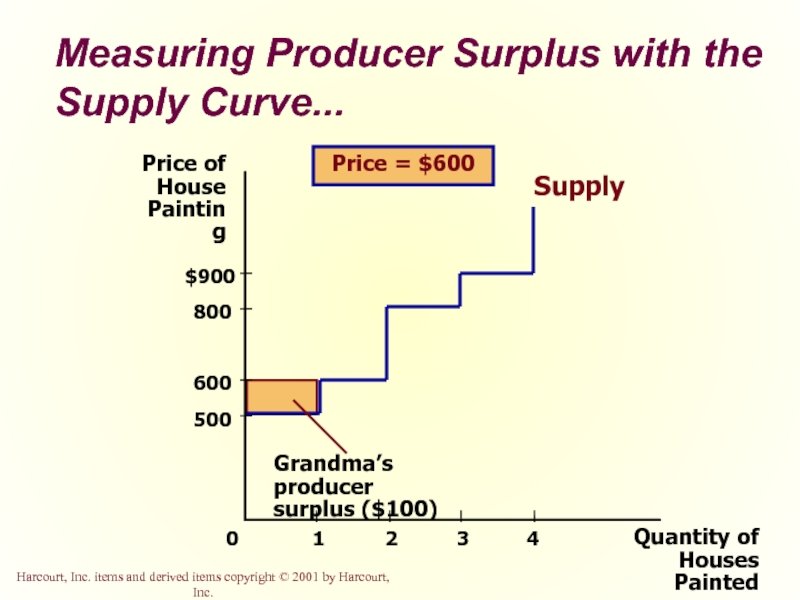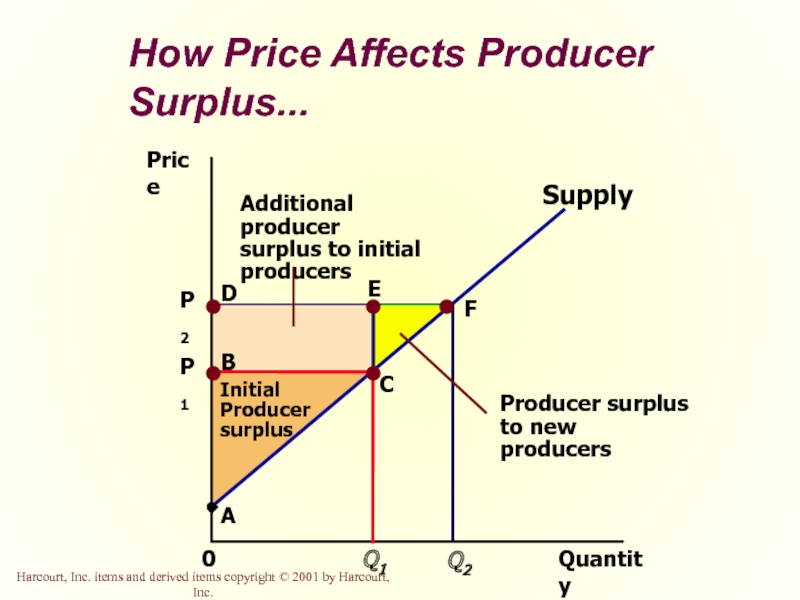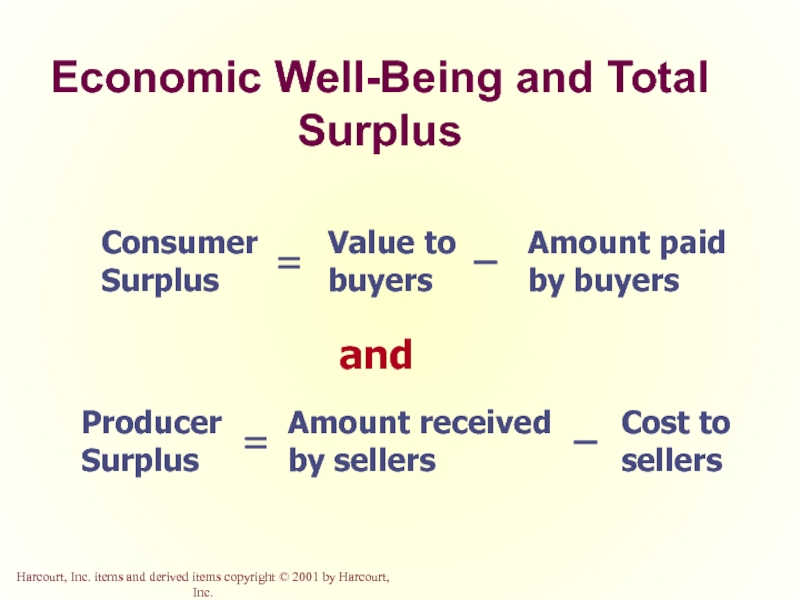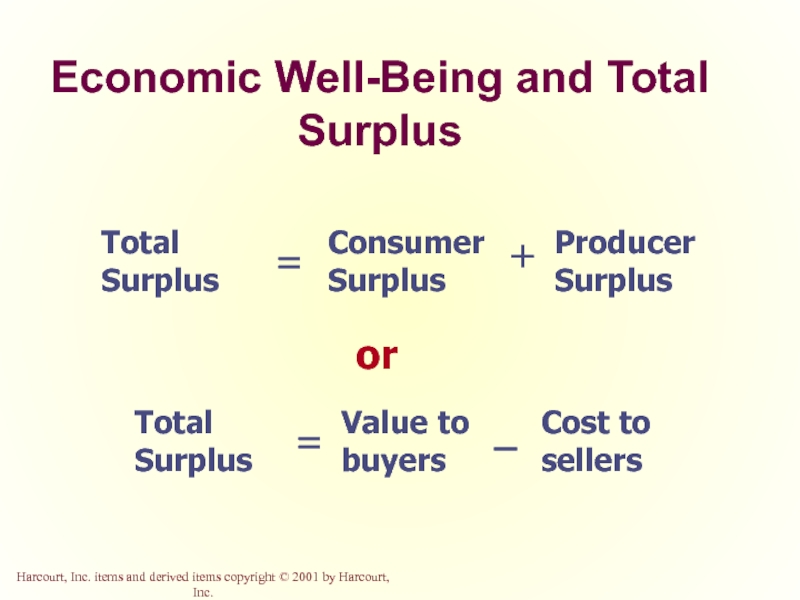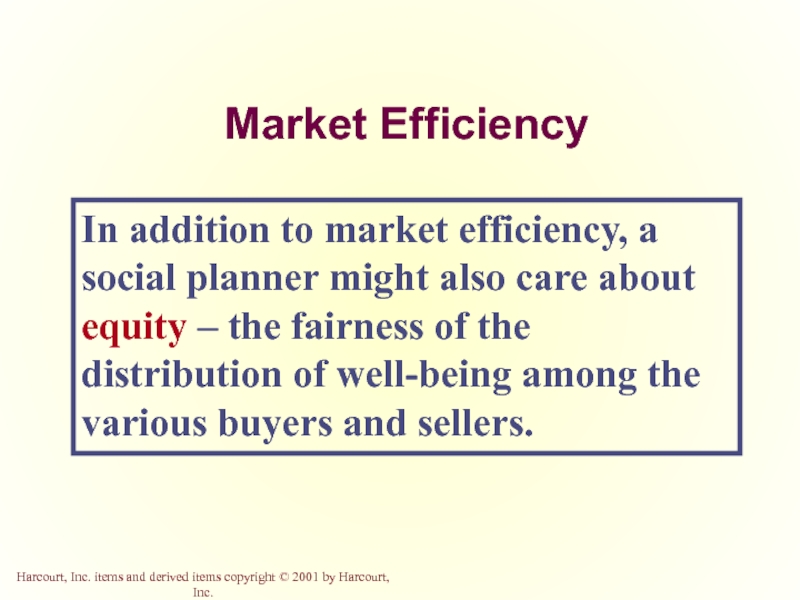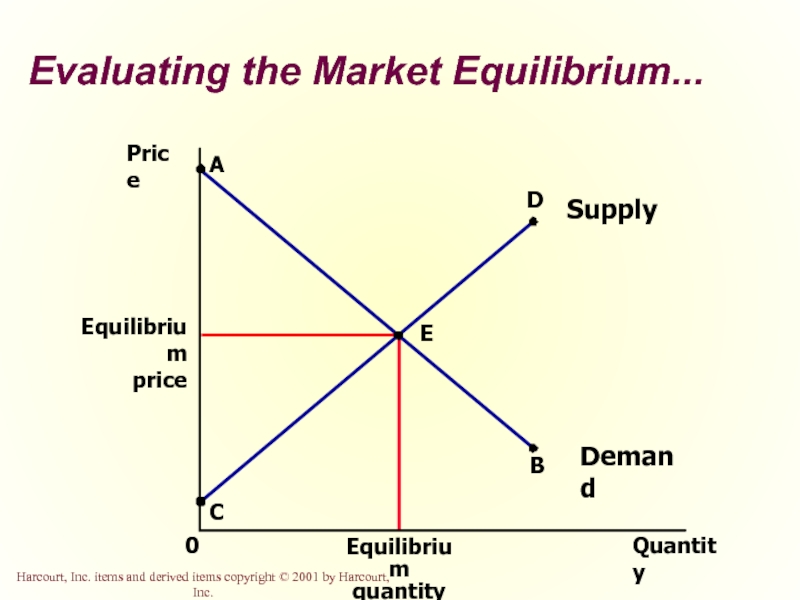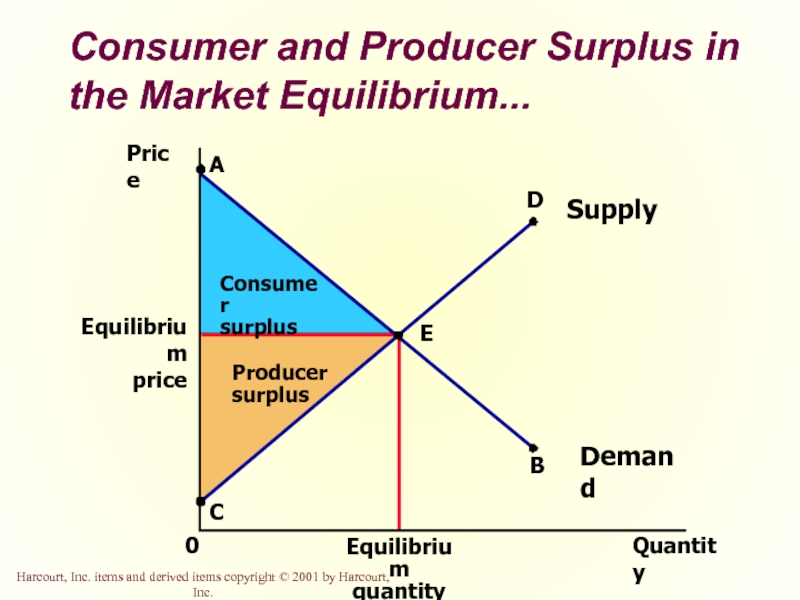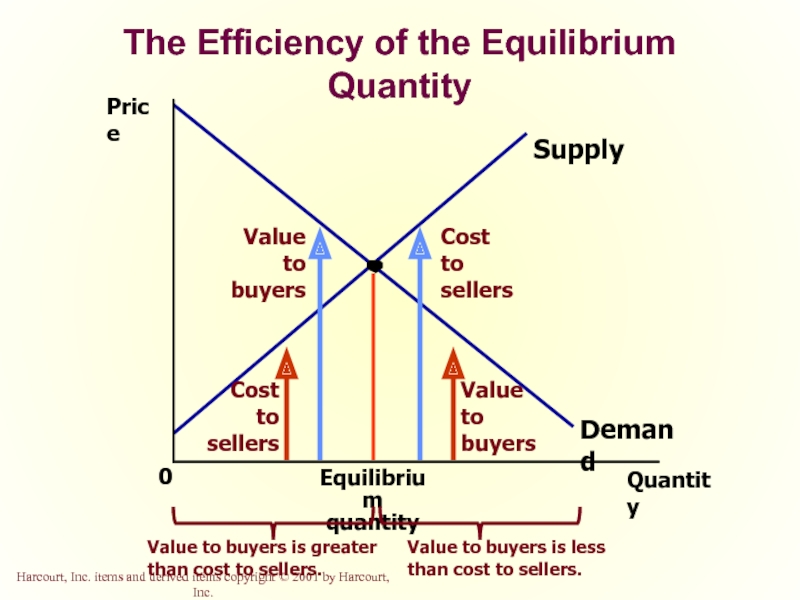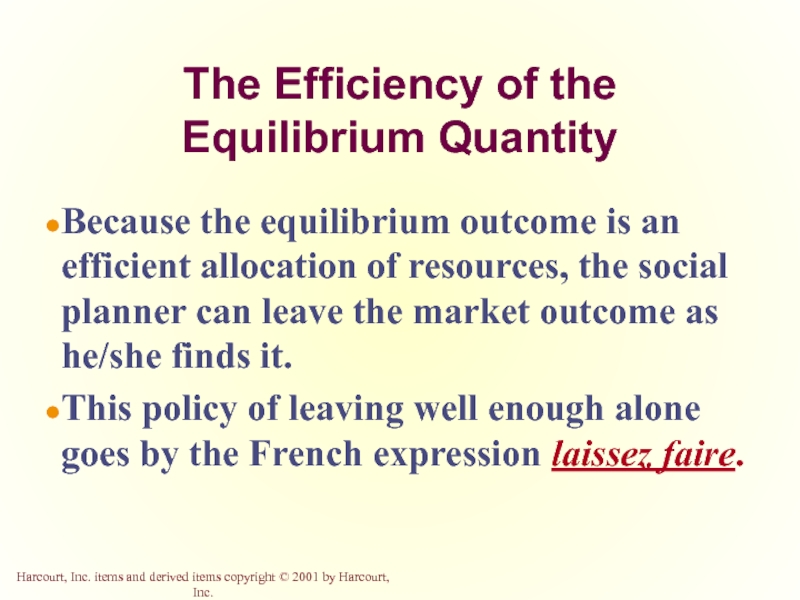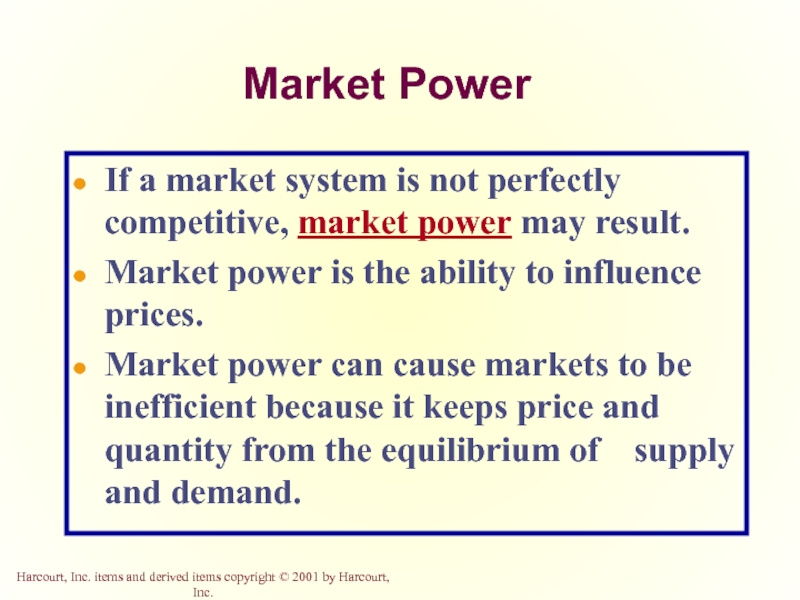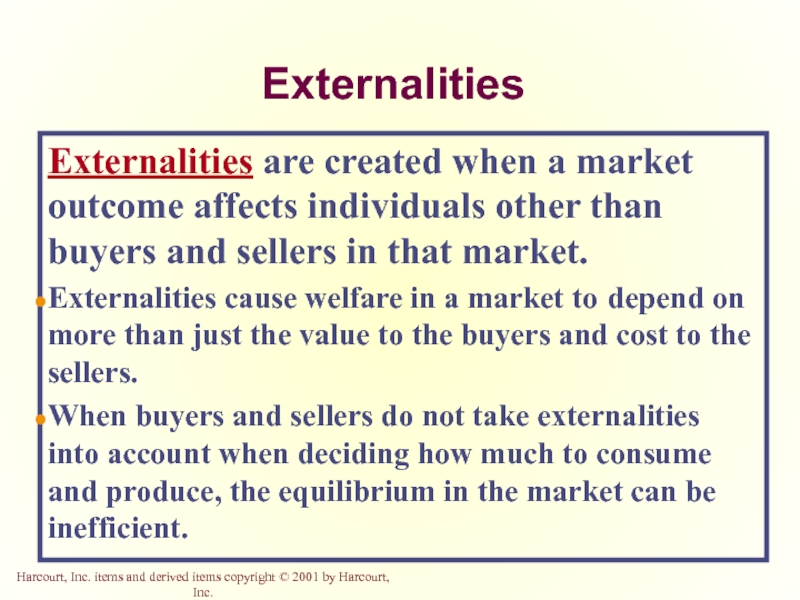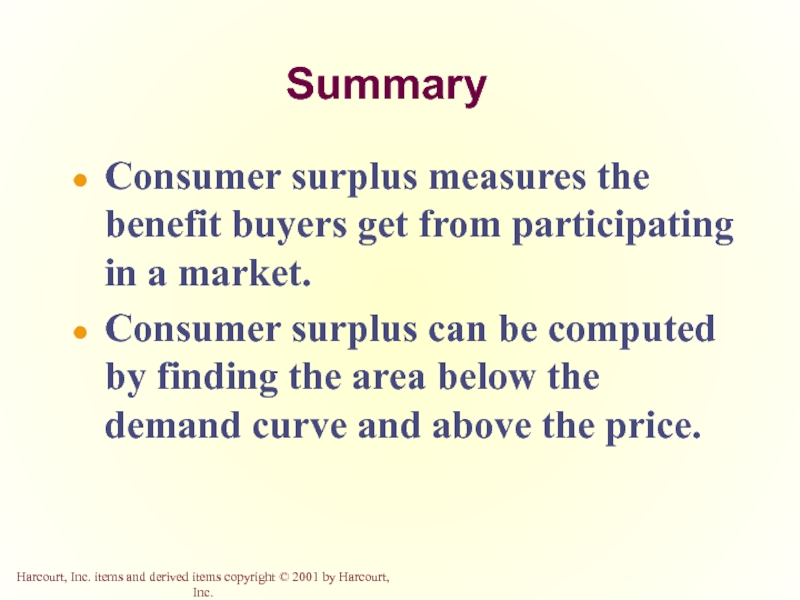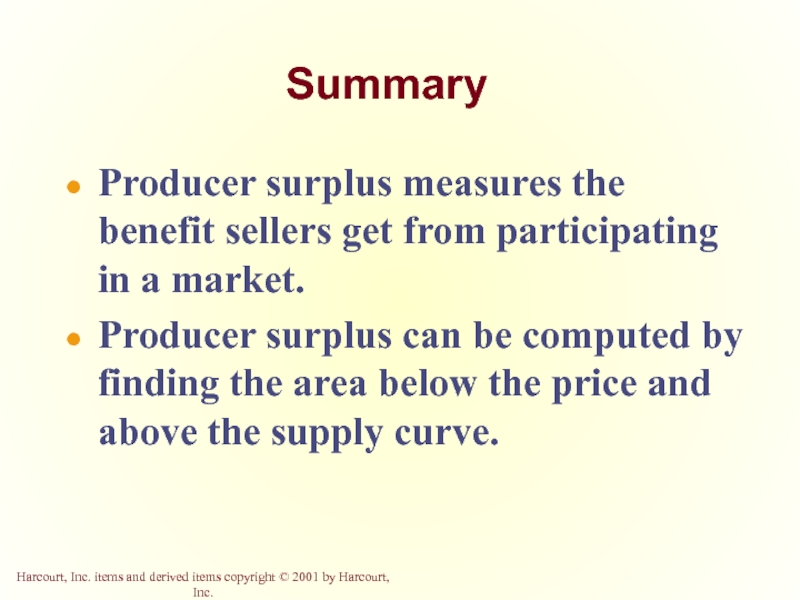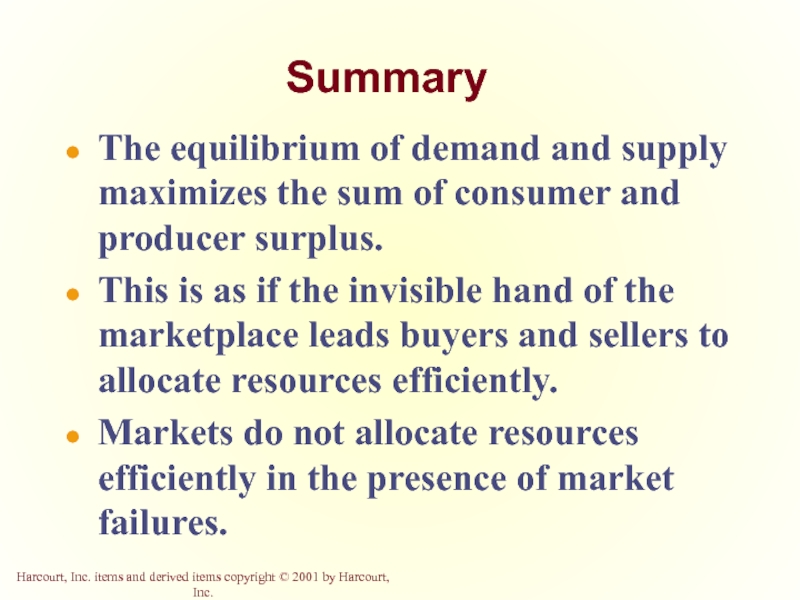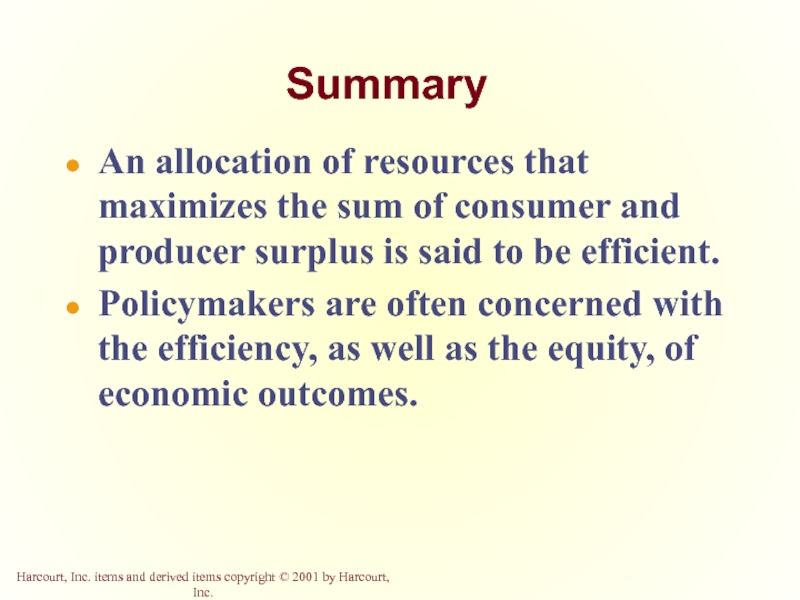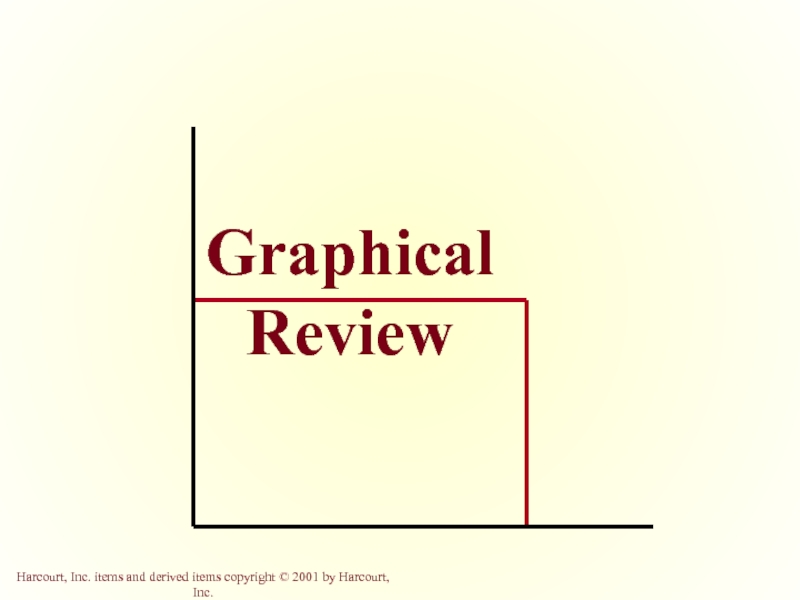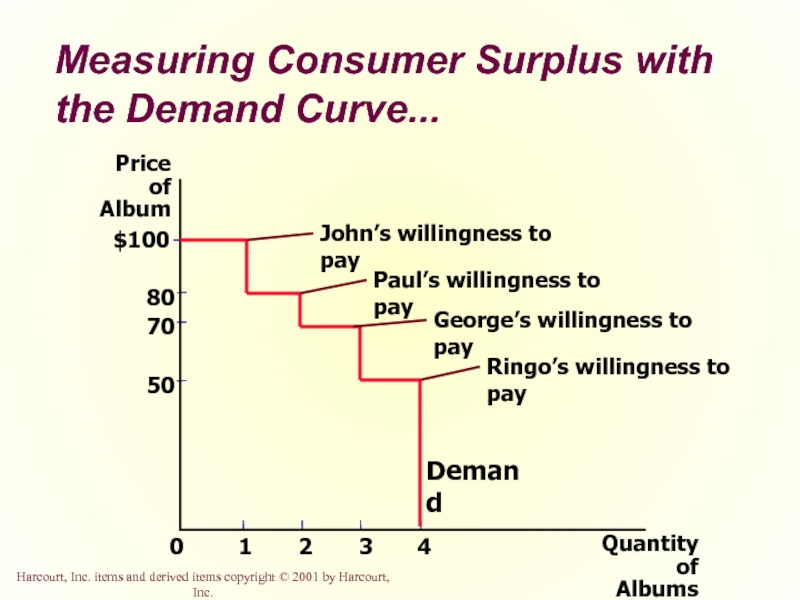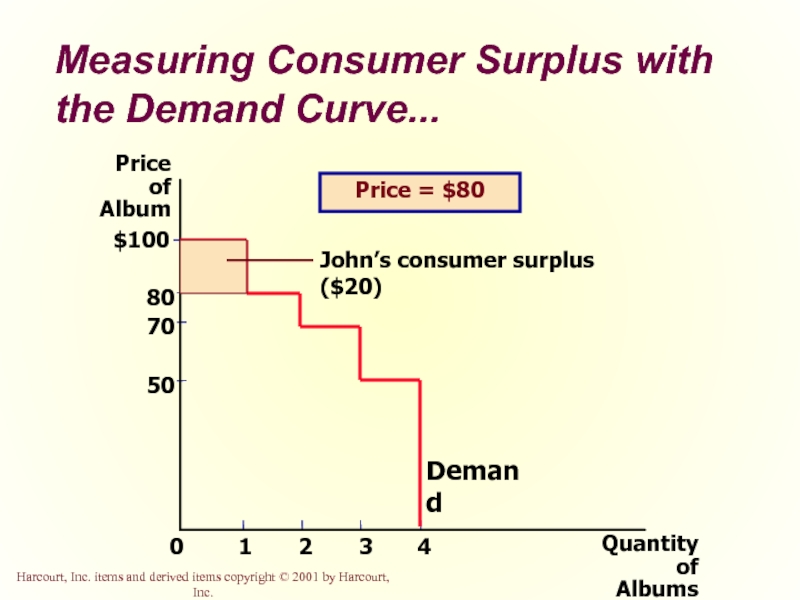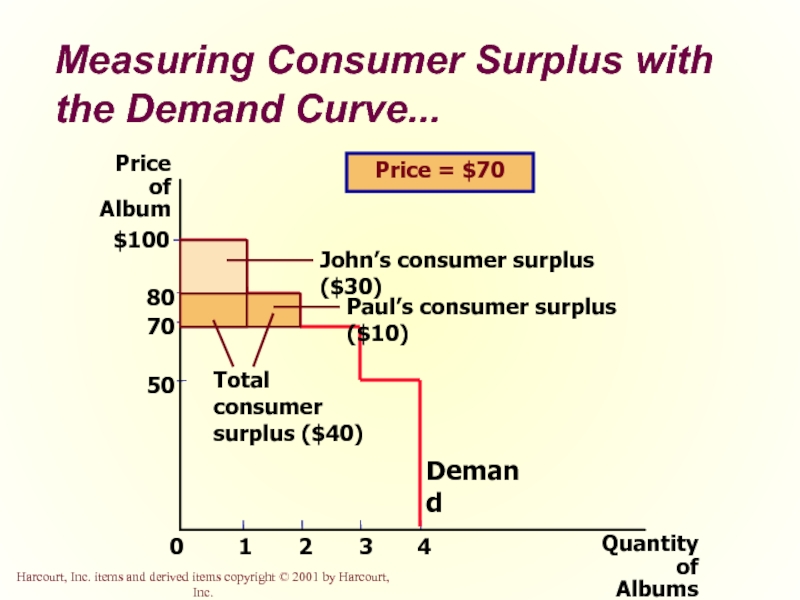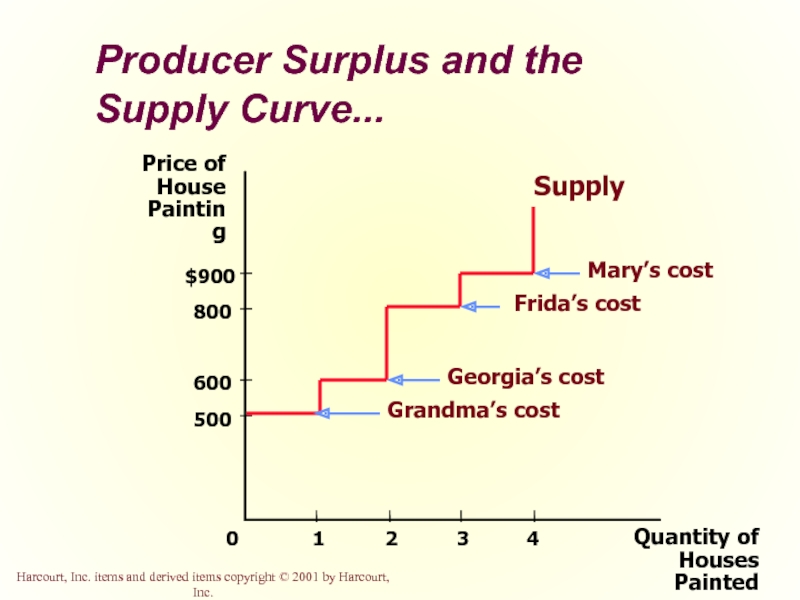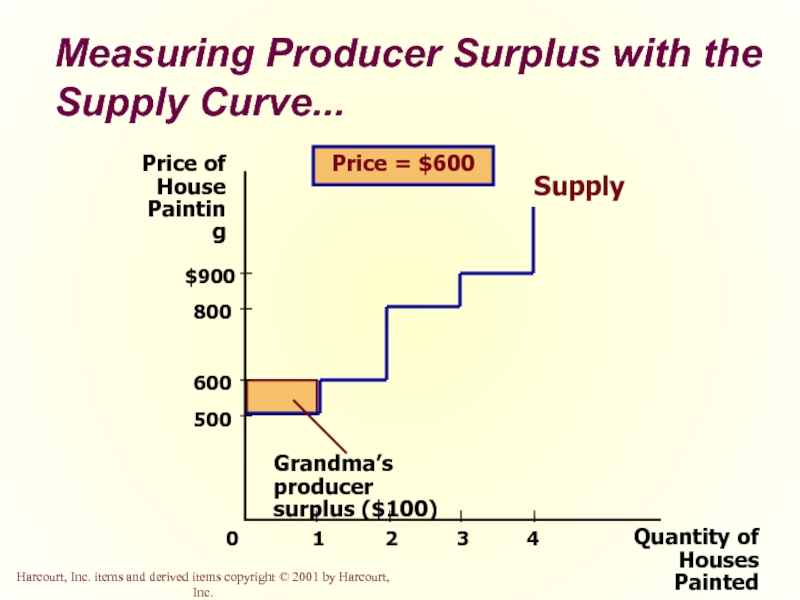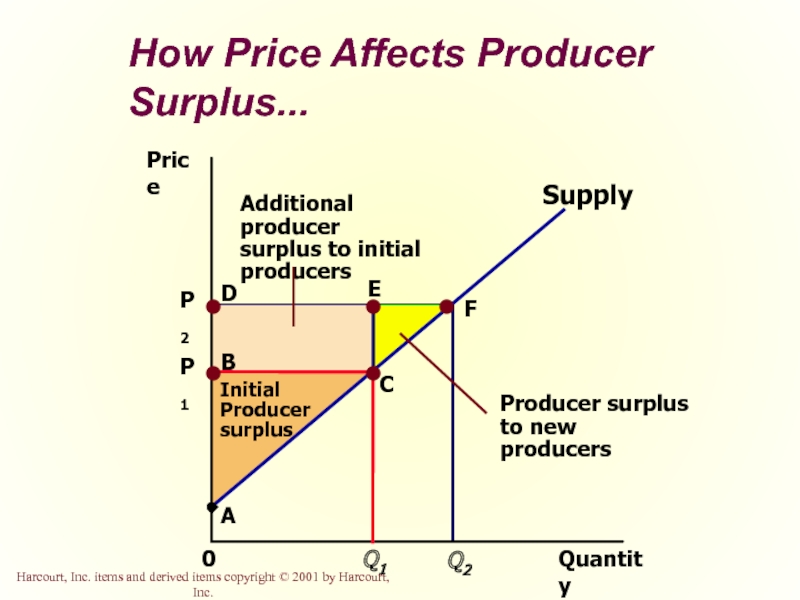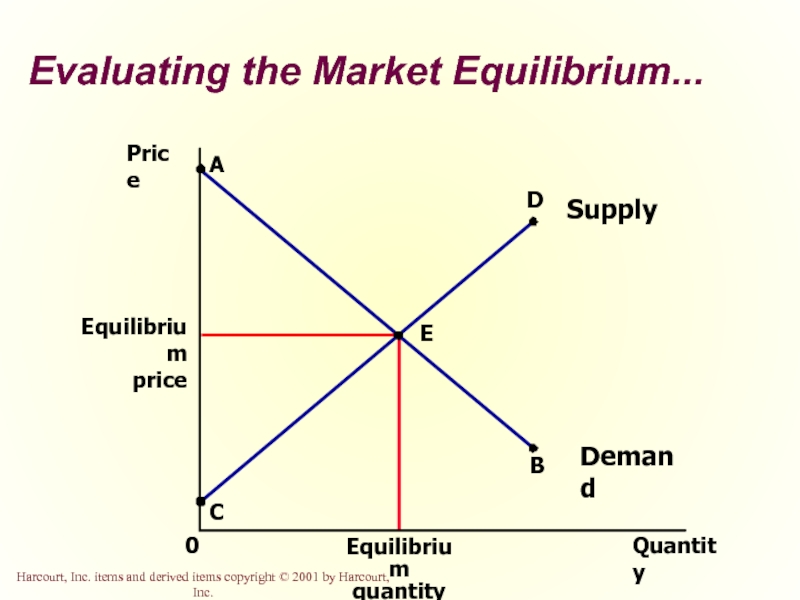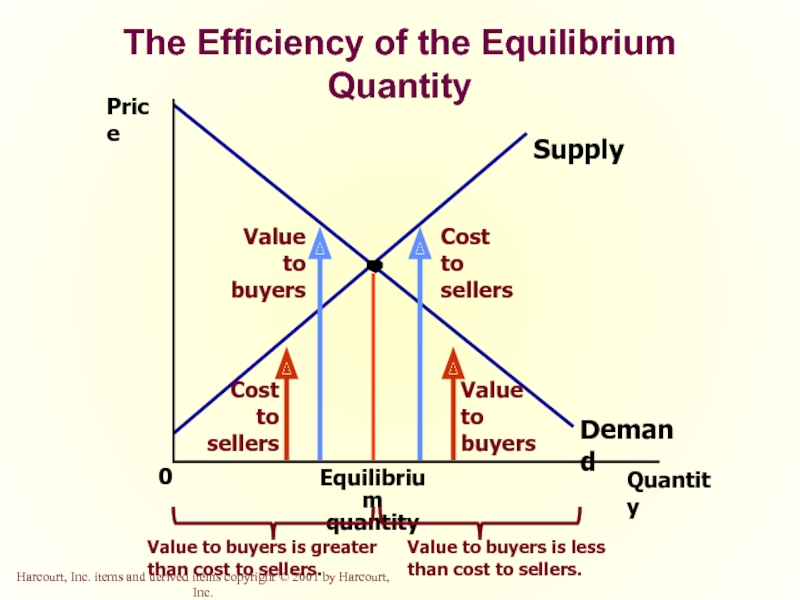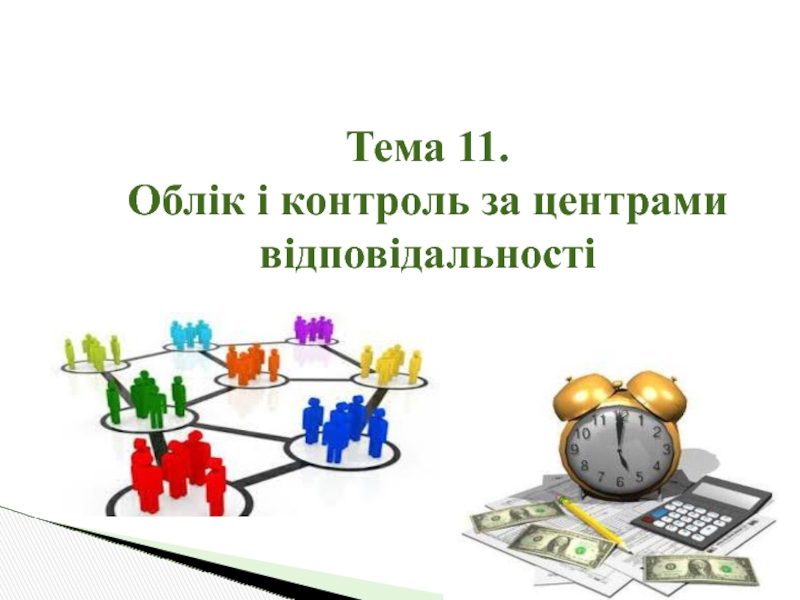Harcourt, Inc.
All rights reserved. Requests for permission to make copies of any part of the
work should be mailed to:
Permissions Department, Harcourt College Publishers,
6277 Sea Harbor Drive, Orlando, Florida 32887-6777.
- Главная
- Разное
- Дизайн
- Бизнес и предпринимательство
- Аналитика
- Образование
- Развлечения
- Красота и здоровье
- Финансы
- Государство
- Путешествия
- Спорт
- Недвижимость
- Армия
- Графика
- Культурология
- Еда и кулинария
- Лингвистика
- Английский язык
- Астрономия
- Алгебра
- Биология
- География
- Детские презентации
- Информатика
- История
- Литература
- Маркетинг
- Математика
- Медицина
- Менеджмент
- Музыка
- МХК
- Немецкий язык
- ОБЖ
- Обществознание
- Окружающий мир
- Педагогика
- Русский язык
- Технология
- Физика
- Философия
- Химия
- Шаблоны, картинки для презентаций
- Экология
- Экономика
- Юриспруденция
Consumers, Producers, and the Efficiency of Markets презентация
Содержание
- 1. Consumers, Producers, and the Efficiency of Markets
- 2. Revisiting the Market Equilibrium Do
- 3. Welfare Economics Welfare
- 4. Welfare Economics Equilibrium
- 5. Welfare Economics Consumer
- 6. Consumer Surplus Willingness to pay
- 7. Consumer Surplus Consumer surplus is
- 8. Four Possible Buyers’ Willingness to Pay...
- 9. Consumer Surplus The market demand curve depicts
- 10. Four Possible Buyers’ Willingness to Pay...
- 11. Measuring Consumer Surplus with the Demand Curve...
- 12. Measuring Consumer Surplus with the Demand Curve...
- 13. Measuring Consumer Surplus with the Demand Curve...
- 14. Measuring Consumer Surplus with the Demand Curve
- 15. How the Price
- 16. Consumer Surplus and
- 17. Producer Surplus Producer surplus is
- 18. The Costs of Four Possible Sellers...
- 19. Producer Surplus and
- 20. Supply Schedule for the Four Possible Sellers...
- 21. Producer Surplus and the
- 22. The area below the price and above
- 23. Measuring Producer Surplus with the Supply
- 24. Measuring Producer Surplus with
- 25. How Price Affects
- 26. Market Efficiency Consumer surplus and
- 27. Economic Well-Being and Total Surplus and
- 28. Economic Well-Being and Total Surplus or
- 29. Market Efficiency Market efficiency is
- 30. Market Efficiency In addition to
- 31. Evaluating the Market Equilibrium... Price
- 32. Consumer and Producer
- 33. Three Insights Concerning Market Outcomes Free markets
- 34. Price 0 Quantity
- 35. The Efficiency of the Equilibrium Quantity Because
- 36. Market Power If a market system is
- 37. Externalities Externalities are created when a market
- 38. Summary Consumer surplus measures the benefit buyers
- 39. Summary Producer surplus measures the benefit sellers
- 40. Summary The equilibrium of demand and supply
- 41. Summary An allocation of resources that maximizes
- 43. Measuring Consumer Surplus with the Demand Curve...
- 44. Measuring Consumer Surplus with the Demand Curve...
- 45. Measuring Consumer Surplus with the Demand Curve...
- 46. How the Price Affects Consumer Surplus...
- 47. Producer Surplus and the Supply Curve...
- 48. Measuring Producer Surplus with the Supply Curve...
- 49. Measuring Producer Surplus with the Supply Curve...
- 50. How Price Affects Producer Surplus...
- 51. Evaluating the Market Equilibrium...
- 52. Consumer and Producer Surplus in the Market Equilibrium...
- 53. The Efficiency of the Equilibrium Quantity
Слайд 2
Revisiting the Market Equilibrium
Do the equilibrium price and quantity maximize the
total welfare of buyers and sellers?
Market equilibrium reflects the way markets allocate scarce resources.
Whether the market allocation is desirable is determined by welfare economics.
Market equilibrium reflects the way markets allocate scarce resources.
Whether the market allocation is desirable is determined by welfare economics.
Слайд 3
Welfare Economics
Welfare economics is the study of how the allocation of
resources affects economic well-being.
Buyers and sellers receive benefits from taking part in the market.
The equilibrium in a market maximizes the total welfare of buyers and sellers.
Buyers and sellers receive benefits from taking part in the market.
The equilibrium in a market maximizes the total welfare of buyers and sellers.
Слайд 4
Welfare Economics
Equilibrium in the market results in maximum benefits, and therefore
maximum total welfare for both the consumers and the producers of the product.
Слайд 5
Welfare Economics
Consumer surplus measures economic welfare from the buyer’s side.
Producer surplus
measures economic welfare from the seller’s side.
Слайд 6
Consumer Surplus
Willingness to pay is the maximum price that a buyer
is willing and able to pay for a good.
It measures how much the buyer values the good or service.
It measures how much the buyer values the good or service.
Слайд 7
Consumer Surplus
Consumer surplus is the amount a buyer is willing to
pay for a good minus the amount the buyer actually pays for it.
Слайд 9Consumer Surplus
The market demand curve depicts the various quantities that buyers
would be willing and able to purchase at different prices.
Слайд 11Measuring Consumer Surplus with the Demand Curve...
Price of
Album
50
70
80
0
$100
1
2
3
4
Quantity of
Albums
Слайд 12Measuring Consumer Surplus with the Demand Curve...
Price of
Album
50
70
80
0
$100
1
2
3
4
Quantity of
Albums
Demand
Price = $80
Слайд 13Measuring Consumer Surplus with the Demand Curve...
Price of
Album
50
70
80
0
$100
1
2
3
4
Quantity of
Albums
Demand
Price = $70
Слайд 14Measuring Consumer Surplus with the Demand Curve
The area below the demand
curve and above the price measures the consumer surplus in the market.
Слайд 15
How the Price Affects Consumer Surplus...
Quantity
Price
0
Demand
Copyright © 2001 by Harcourt, Inc.
All rights reserved
Initial
consumer
surplus
Слайд 16
Consumer Surplus and Economic Well-Being
Consumer surplus, the amount that buyers are
willing to pay for a good minus the amount they actually pay for it, measures the benefit that buyers receive from a good as the buyers themselves perceive it.
Слайд 17
Producer Surplus
Producer surplus is the amount a seller is paid minus
the cost of production.
It measures the benefit to sellers participating in a market.
It measures the benefit to sellers participating in a market.
Слайд 19
Producer Surplus and the Supply Curve
Just as consumer surplus is related
to the demand curve, producer surplus is closely related to the supply curve.
At any quantity, the price given by the supply curve shows the cost of the marginal seller, the seller who would leave the market first if the price were any lower.
At any quantity, the price given by the supply curve shows the cost of the marginal seller, the seller who would leave the market first if the price were any lower.
Слайд 21
Producer Surplus and the
Supply Curve...
Quantity of
Houses Painted
Price of
House
Painting
500
800
$900
0
600
1
2
3
4
Supply
Слайд 22The area below the price and above the supply curve measures
the producer surplus in a market.
Producer Surplus and the
Supply Curve
Слайд 23
Measuring Producer Surplus with the Supply Curve...
Quantity of
Houses Painted
Price of
House
Painting
500
800
$900
0
600
1
2
3
4
Supply
Price =
$600
Слайд 24
Measuring Producer Surplus with the Supply Curve...
Quantity of
Houses Painted
Price of
House
Painting
500
800
$900
0
600
1
2
3
4
Supply
Price =
$800
Слайд 26
Market Efficiency
Consumer surplus and producer surplus may be used to address
the following question:
Is the allocation of resources determined by free markets in any way desirable?
Is the allocation of resources determined by free markets in any way desirable?
Слайд 29
Market Efficiency
Market efficiency is achieved when the allocation of resources maximizes
total surplus.
Слайд 30
Market Efficiency
In addition to market efficiency, a social planner might also
care about equity – the fairness of the distribution of well-being among the various buyers and sellers.
Слайд 31
Evaluating the Market Equilibrium...
Price
Equilibrium
price
0
Quantity
Equilibrium
quantity
A
Supply
C
B
Demand
D
E
Слайд 32
Consumer and Producer Surplus in the Market Equilibrium...
Price
Equilibrium
price
0
Quantity
Equilibrium
quantity
A
Supply
C
B
Demand
D
E
Producer
surplus
Consumer
surplus
Слайд 33Three Insights Concerning Market Outcomes
Free markets allocate the supply of goods
to the buyers who value them most highly.
Free markets allocate the demand for goods to the sellers who can produce them at least cost.
Free markets produce the quantity of goods that maximizes the sum of consumer and producer surplus.
Free markets allocate the demand for goods to the sellers who can produce them at least cost.
Free markets produce the quantity of goods that maximizes the sum of consumer and producer surplus.
Слайд 34
Price
0
Quantity
Equilibrium
quantity
Supply
Demand
Cost to sellers
Value to buyers
Value to buyers
Cost to sellers
Value to
buyers is greater than cost to sellers.
Value to buyers is less than cost to sellers.
The Efficiency of the Equilibrium Quantity
Слайд 35The Efficiency of the Equilibrium Quantity
Because the equilibrium outcome is an
efficient allocation of resources, the social planner can leave the market outcome as he/she finds it.
This policy of leaving well enough alone goes by the French expression laissez faire.
This policy of leaving well enough alone goes by the French expression laissez faire.
Слайд 36Market Power
If a market system is not perfectly competitive, market power
may result.
Market power is the ability to influence prices.
Market power can cause markets to be inefficient because it keeps price and quantity from the equilibrium of supply and demand.
Market power is the ability to influence prices.
Market power can cause markets to be inefficient because it keeps price and quantity from the equilibrium of supply and demand.
Слайд 37Externalities
Externalities are created when a market outcome affects individuals other than
buyers and sellers in that market.
Externalities cause welfare in a market to depend on more than just the value to the buyers and cost to the sellers.
When buyers and sellers do not take externalities into account when deciding how much to consume and produce, the equilibrium in the market can be inefficient.
Externalities cause welfare in a market to depend on more than just the value to the buyers and cost to the sellers.
When buyers and sellers do not take externalities into account when deciding how much to consume and produce, the equilibrium in the market can be inefficient.
Слайд 38Summary
Consumer surplus measures the benefit buyers get from participating in a
market.
Consumer surplus can be computed by finding the area below the demand curve and above the price.
Consumer surplus can be computed by finding the area below the demand curve and above the price.
Слайд 39Summary
Producer surplus measures the benefit sellers get from participating in a
market.
Producer surplus can be computed by finding the area below the price and above the supply curve.
Producer surplus can be computed by finding the area below the price and above the supply curve.
Слайд 40Summary
The equilibrium of demand and supply maximizes the sum of consumer
and producer surplus.
This is as if the invisible hand of the marketplace leads buyers and sellers to allocate resources efficiently.
Markets do not allocate resources efficiently in the presence of market failures.
This is as if the invisible hand of the marketplace leads buyers and sellers to allocate resources efficiently.
Markets do not allocate resources efficiently in the presence of market failures.
Слайд 41Summary
An allocation of resources that maximizes the sum of consumer and
producer surplus is said to be efficient.
Policymakers are often concerned with the efficiency, as well as the equity, of economic outcomes.
Policymakers are often concerned with the efficiency, as well as the equity, of economic outcomes.
